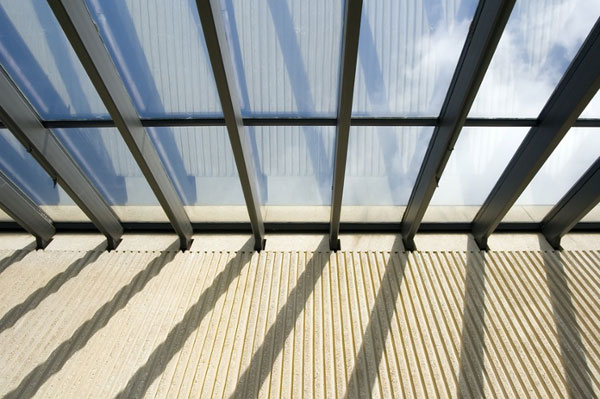
24 May Which Skylight is Right for Your Home?

I’ve heard that there are glass ones. What are the different types? Is there a glass one that doesn’t make all the noise in the rain and filters some of the heat?
Yes there are different types. Let’s discuss them. The term skylight or roof window is often used to describe several styles.
Ventilating skylights are excellent for kitchens or bathrooms. In addition to providing extra light, they also open. This overhead ventilation creates an updraft. Ventilated skylights can be operated by several means: Controlled by temperature sensor, Remote control, Electric on/off wall switch, Manual or motorized hand crank.
Fixed skylights are for additional light only. They’re great for attics, bonus rooms or anywhere you want extra illumination without entrance or exhaustion of air. Styles and sizes vary from domes to rectangles. Glass and acrylic or plastic skylights are available.
Tubular skylights are relatively new on the scene. The small size allows them it to be used in spaces where full-sized skylights cannot. Hallways, bathrooms, even closets can accommodate a tubular skylight. They provide a lot of light in spite of their small size. The concept and installation process are basically the same as for a regular skylight, except they have an enclosed tunnel of reflective material to reflect the light. They are available in many sizes. The small ones are 10 to 12 inch diameter and the large ones are 24 inches.
Skylights are one of the quickest and easiest ways to make any room of your home lighter and brighter, adding an open and airy feeling.
Flat glass skylights come mounted in a wood or integrated rubber and metal framework, and require no additional curb construction. After the hole is cut, the skylight frame is simply attached to the roof sheathing with L-brackets, then the installation is completed using the factory-supplied flashing kit. Ease of installation, superior insulating qualities, less tendency to scratch and a cleaner finished appearance all add to the popularity and somewhat higher cost of glass skylights.
Glass skylights also have a greater number of optional accessories. These include tempered, laminated or wire glass; shades and blinds for light control; glass tints for heat retention or to block sunlight; and the ability to open fully or partially for ventilation.
Domed acrylic skylights are less expensive than glass. The acrylic dome is typically mounted in an aluminum frame, which is in turn mounted on a box called a “curb.” Once the hole is cut in the roof to the manufacturer’s specifications, the curb is typically constructed on-site to raise the skylight above the level of the roof sheathing. Site-built or factory-supplied flashings are used to seal the roofing around the curb. Domed skylights are available in clear, smoked, bronze or other tints.
Some domed plastic skylights are flush mounted, which means that the lens piece and flashing piece are both made of plastic and then placed on the roof without a curb. The problem with this type is that they are loud and very susceptible to leakage.
If the room you intend to illuminate with the skylight has an open ceiling with no attic space above, you can install the skylight without needing to construct a light shaft. This is by far the simplest installation, and it offers the maximum amount of light and a view of the sky.
For ceilings with an attic space above, a light shaft must be constructed that connects the skylight to the room. Skylight shafts take one of three forms:
Straight, in which the shaft drops vertically from the roof to the ceiling and is the same dimension as the skylight itself. This type is the easiest to construct, but because of its offset angle relative to the skylight, offers the least amount of light.
Angled, where the shaft is parallel to the pitch of the skylight. It, too, is the same dimension as the skylight, but its straight-in angle offers more light than a straight shaft. Angled shafts also are used to connect two locations that cannot otherwise be aligned. This occurs when the skylight must be installed in a particular spot – between two trusses, for example – and the shaft opening is likewise limited to a particular location on the ceiling that is not directly under the skylight.
Splayed, or pyramid, in which the ceiling opening is larger than the skylight opening in width, length or both. This type, although a little harder to construct, is the most popular, simply because it allows a smaller skylight to illuminate a larger area.
You will need to position and mark the opening on the ceiling after the skylight is installed. Take into consideration the size of the room and the amount of light you wish to bring in, and select the size and position of the hole accordingly.
Once the skylight is installed and the ceiling hole is cut, it’s then a matter of connecting the two with the shaft, which is typically constructed from 2×4 or 2×6 lumber. The angles involved typically require some tricky framing, and is probably best left to an experienced carpenter.
After the framing is completed, the inside of the shaft is covered with wood or drywall, and the attic side is insulated to minimize heat loss. To reflect an even greater amount of light into the room, consider painting the inside of the shaft with gloss or semi-gloss white paint.
The glass skylights are for superior to the plastic ones. The best glass skylights are surface-mounted. The flashing, curb, and lens are all manufactured together. They do not have separate moving parts. This makes them less susceptible to leakage and much quieter when it rains.




